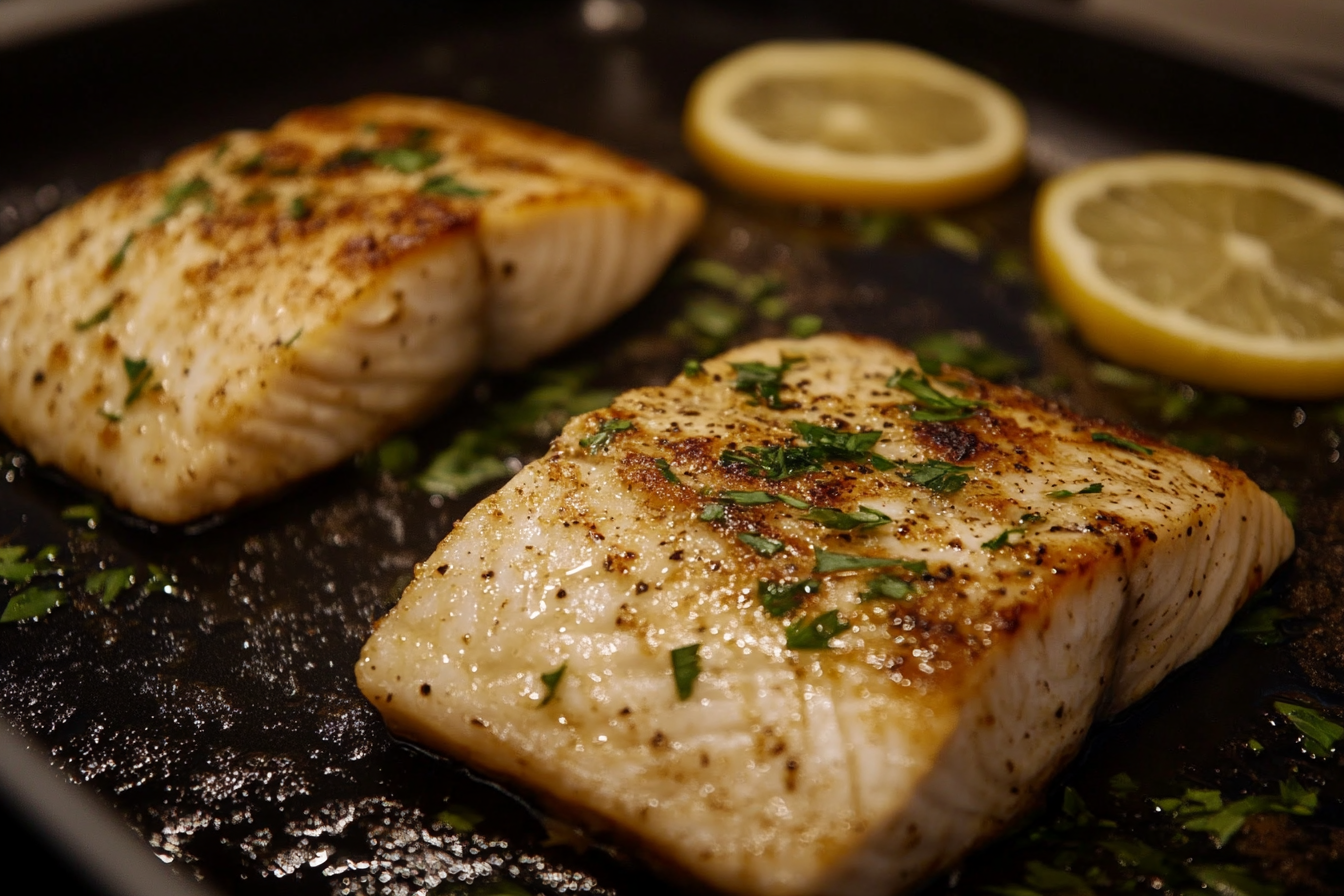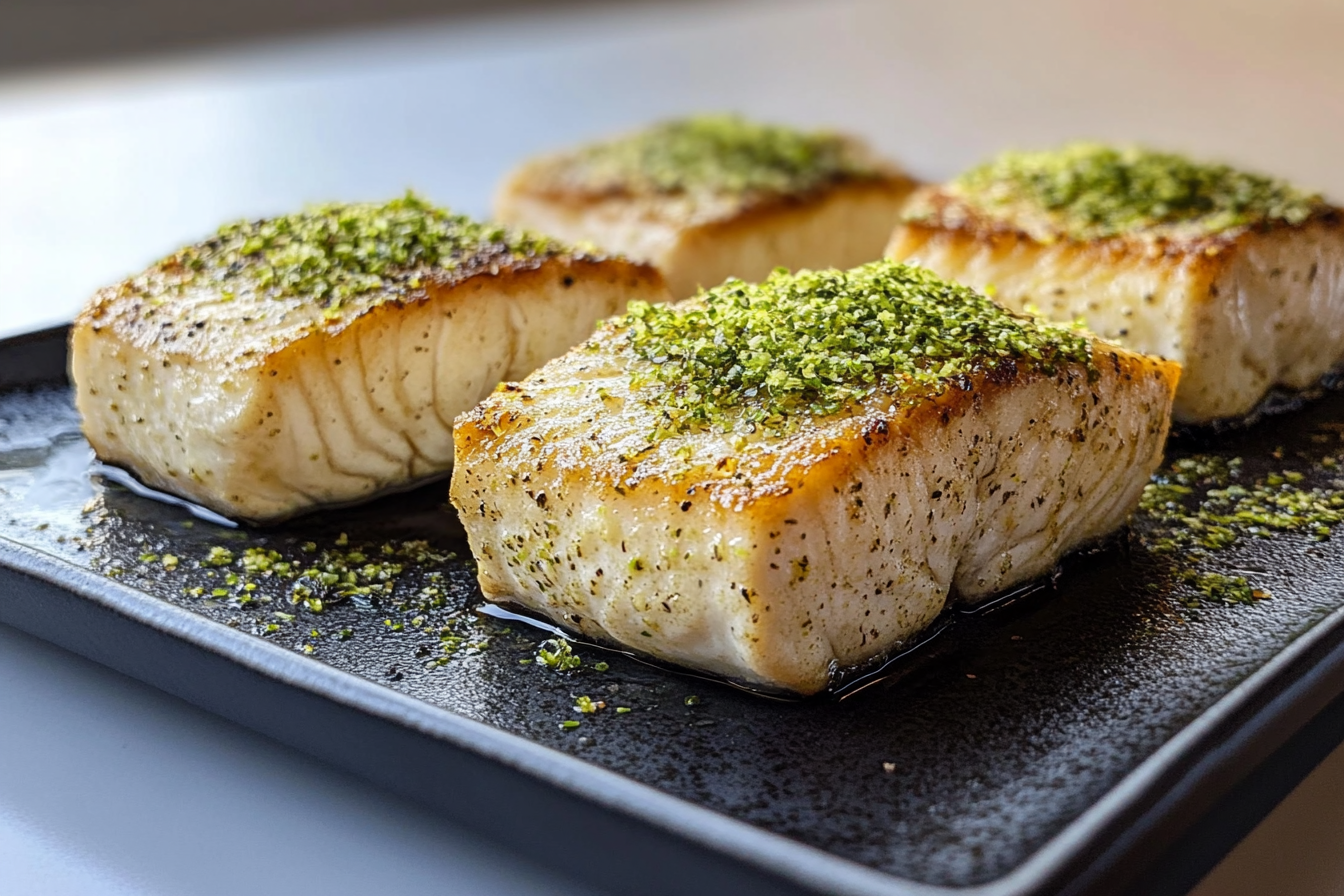Mahi-mahi is a firm, flavorful fish that’s often featured in high-end seafood restaurants, but it’s also becoming more popular in home kitchens. If you’re wondering, “Is mahi-mahi a good fish to eat?”, the answer is yes. Its versatility, health benefits, and relatively low mercury levels make it an excellent choice for seafood lovers. But how good is mahi-mahi really for your health and the environment? Let’s explore why mahi-mahi is a good fish to eat.
In this comprehensive guide, we will explore everything you need to know about mahi-mahi, from its nutritional value to cooking methods, and whether it’s a sustainable choice. By the end of this article, you will have a clearer understanding of whether mahi-mahi should be part of your diet and how best to enjoy it.
What Is Mahi-Mahi?
Mahi-mahi (Coryphaena hippurus), also known as the dolphinfish or dorado, is a vibrant and striking fish found in tropical and subtropical oceans around the world. Despite being called dolphinfish, it has no relation to dolphins, and the confusion often stems from its common name.
A Closer Look at the Fish’s Origins and Appearance
The name mahi-mahi comes from the Polynesian language, meaning “strong,” a reference to the fish’s strong swimming ability and rapid reproduction rate. This fast-growing fish can reach full size quickly, making it a sustainable seafood option when harvested responsibly.
Mahi-mahi is easily recognizable due to its striking colors, including bright gold, blue, and green. The fish’s physical beauty makes it a favorite among anglers, and its firm texture and mild flavor make it a popular choice for chefs and home cooks alike.
Why Is It Called Dolphin Fish?
The confusion around the name dolphinfish comes from the fish’s speed and playful behavior, which resemble dolphins in some ways. However, mahi-mahi and dolphins are completely different species. While dolphins are mammals, mahi-mahi is a species of fish and has no biological connection to dolphins.
Mahi-mahi can grow up to 3 to 4 feet long and weigh up to 30 pounds, though most served in restaurants are smaller. They grow quickly and have a short lifespan of 3 to 4 years, making them a good choice for sustainable fishing since their populations can recover fast when managed well.
The Nutritional Value of Mahi-Mahi
Mahi-mahi is not only a delicious fish but also a nutritionally rich one. It is packed with lean protein, vitamins, minerals, and omega-3 fatty acids, all of which contribute to various aspects of health.
Here is a more detailed breakdown of the nutrients in a 3-ounce serving of cooked mahi-mahi:
- Calories: 92.6 kcal
- Protein: 20.2 grams
- Fat: 0.8 grams
- Omega-3 Fatty Acids: 118 mg
- Selenium: 39.8 mcg (57% DV)
- Vitamin B12: 0.6 mcg (10% DV)
- Niacin (Vitamin B3): 6.3 mg (32% DV)
- Vitamin B6: 0.4 mg (20% DV)
- Phosphorus: 156 mg (16% DV)
- Potassium: 453 mg (13% DV)
- Magnesium: 32.3 mg (8% DV)
- Iron: 1.2 mg (7% DV)
Protein and Fat Content
One of the standout nutritional benefits of mahi-mahi is its high protein content relative to its low calorie and fat levels. A 3-ounce serving provides over 20 grams of protein with less than 1 gram of fat, making it an ideal choice for those looking to increase protein intake without consuming too many calories or fats.
This is particularly beneficial for:
- Weight management: High protein intake helps with satiety, keeping you feeling full longer, which can reduce overeating.
- Muscle growth and repair: Protein is essential for muscle recovery after exercise, making mahi-mahi an excellent choice for athletes or active individuals.
Vitamin and Mineral Content
Mahi-mahi also provides several essential vitamins and minerals, including:
- Selenium: An important antioxidant that protects cells from damage and supports the immune system.
- Vitamin B12: Critical for nerve health and the production of red blood cells. A deficiency in B12 can lead to fatigue, cognitive issues, and anemia.
- Vitamin B6: Supports brain development and helps the body convert food into energy.
- Potassium: Helps regulate blood pressure by counterbalancing the effects of sodium.
The combination of these nutrients makes mahi-mahi not only a tasty addition to your meal but also a powerful ally in promoting overall health and wellness.
Health Benefits of Eating Mahi-Mahi
Including mahi-mahi in your diet can offer several health benefits, from improving heart health to boosting brain function. Let’s explore some of the key advantages.
1. Heart Health
Fish like mahi-mahi are well known for being good for your heart. While it doesn’t have as much omega-3 as oily fish like salmon, mahi-mahi still has a good amount of these healthy fats, which can lower the risk of heart problems.
Research shows that omega-3 can help lower fat levels in the blood, reduce swelling, and stop harmful blood clots from forming. Eating fish rich in omega-3 regularly can help lower the chances of having a stroke or heart attack.
Studies show that omega-3 fatty acids can help lower triglyceride levels.
2. Supports Brain Function and Mental Health
The B vitamins in mahi-mahi, especially vitamin B12 and B6, are important for keeping your brain healthy. These vitamins help make neurotransmitters, which are the chemicals that control your mood and brain function.
Eating foods high in vitamin B12 is linked to better memory and may lower the risk of brain diseases like Alzheimer’s. Vitamin B6 helps balance mood by supporting the production of serotonin and dopamine, which are hormones that make you feel happy and reduce anxiety.
3. Anti-Inflammatory Properties
While mahi-mahi is a lean fish, its moderate levels of omega-3 fatty acids still provide significant anti-inflammatory benefits. Inflammation is linked to various chronic conditions, including heart disease, arthritis, and even cancer. Including mahi-mahi in your weekly meals can help keep chronic inflammation at bay and promote long-term health.
4. Weight Loss and Muscle Maintenance
Due to its high protein content and low calorie count, mahi-mahi is an excellent food for those looking to lose weight or maintain muscle mass. Protein helps build and repair muscle tissue, which is especially important for active individuals or those engaging in regular exercise.
Additionally, protein takes longer to digest than carbohydrates, helping you feel fuller for longer periods. This can reduce overall calorie intake throughout the day and assist in weight management.
5. Selenium: A Powerful Antioxidant
Selenium is an essential mineral that acts as an antioxidant in the body. It helps protect cells from oxidative damage, which can lead to chronic diseases and premature aging. By including selenium-rich foods like mahi-mahi in your diet, you can support your immune system and lower your risk of developing certain cancers.
Mercury Levels in Mahi-Mahi: Safety Considerations
A common concern when eating seafood, including mahi-mahi, is mercury exposure. Larger predatory fish, such as swordfish and tuna, tend to accumulate high levels of mercury, which can pose health risks, particularly for pregnant women and young children.
Fortunately, mahi-mahi is a healthier fish choice with lower mercury levels than other large fish like swordfish, shark, and king mackerel. This makes mahi-mahi safer to eat in moderation. The Environmental Working Group ranks mahi-mahi as a moderate-mercury fish, making it a better option for people looking for healthy, low-mercury seafood.
Safe Consumption Guidelines:
- Adults: Up to 6 servings (3-4 ounces each) per month
- Pregnant Women: Limit to 1 serving per week
- Children: Smaller portions, typically 1-2 servings per month
For individuals concerned about mercury exposure, mahi-mahi is a safer option compared to fish like tuna or swordfish, but it’s still important to follow consumption guidelines to minimize any potential risk.
Is Mahi-Mahi a Sustainable Choice?
Many people are becoming more concerned about sustainability, especially when it comes to seafood. Overfishing and harmful fishing methods can reduce fish numbers and damage ocean habitats.
The good news is that mahi-mahi is considered a fairly eco-friendly option, especially when it’s sourced responsibly. Mahi-mahi caught in the U.S. is often fished using methods like trolling and hand lines, which are less harmful to the environment than longline fishing.
Key Points on Mahi-Mahi Sustainability:
- U.S.-Caught Mahi-Mahi: The Monterey Bay Aquarium’s Seafood Watch rates U.S.-caught mahi-mahi as a sustainable choice, particularly when harvested using eco-friendly methods.
- Avoid Longline-Caught Mahi-Mahi: Longline fishing can result in significant bycatch, harming other marine species like sea turtles and sharks. Whenever possible, choose mahi-mahi caught using hand lines or trolling lines.
For consumers interested in making eco-conscious seafood choices, checking the source of your mahi-mahi is crucial. Always opt for sustainably harvested fish to support marine conservation efforts.
Cooking Mahi-Mahi: Best Methods and Recipe Ideas
Mahi-mahi is a versatile fish that can be cooked in several ways, such as grilling, broiling, baking, or pan-searing. Its firm texture makes it ideal for dishes where the fish needs to hold its shape, like fish tacos, grilled fillets, or kebabs.
Best Cooking Methods:
- Grilling: Brush the fish with olive oil and season with salt, pepper, and lemon juice. Grill over medium heat for 4-5 minutes per side.
- Baking: Preheat the oven to 375°F. Place mahi-mahi fillets in a baking dish, drizzle with olive oil, and season with herbs like thyme or rosemary. Bake for 12-15 minutes, or until the fish flakes easily with a fork.
- Pan-Searing: Heat a pan over medium-high heat with a tablespoon of oil. Sear the fish for 3-4 minutes on each side until it develops a golden crust.
- Broiling: For a quick and easy meal, broil mahi-mahi fillets on high for 6-8 minutes, turning once halfway through.
Recipe Ideas:
- Grilled Mahi-Mahi Tacos: Serve grilled mahi-mahi in soft tortillas with slaw, avocado, and lime for a fresh, flavorful meal.
- Herb-Crusted Mahi-Mahi: Coat the fish in breadcrumbs and herbs, then bake for a crispy, flavorful crust.
- Seared Mahi-Mahi with Lemon Butter: A simple yet elegant dish perfect for a quick weeknight dinner.
For more inspiration on how to use mahi-mahi in your meals, check out this helpful guide on mahi-mahi benefits and recipes.
FAQs About Mahi-Mahi
Is Mahi-Mahi High in Mercury?
No, mahi-mahi has moderate levels of mercury, which makes it safer to eat than larger fish like swordfish or tuna. However, if you’re asking “Is mahi-mahi a good fish to eat?”, it’s still important to watch how much you consume. The recommendation is to enjoy mahi-mahi in moderation, around 1-2 servings per week, especially for pregnant women and young children. So, is mahi-mahi a good fish to eat? Yes, but portion control is crucial for safe consumption.
How Often Can You Eat Mahi-Mahi?
Adults can safely eat mahi-mahi 1-2 times per week, depending on serving size. Following the recommended serving guidelines can help ensure you don’t consume excessive mercury.
Is Mahi-Mahi a Sustainable Fish?
Yes, when sourced from U.S.-caught fisheries, mahi-mahi is considered an eco-friendly seafood option. Look for fish caught using trolling or hand-line methods, as these are better for the environment than longline fishing.
Conclusion: Why Mahi-Mahi is a Great Choice
Mahi-mahi is a tasty, healthy, and eco-friendly choice for seafood lovers. If you’re wondering, “Is mahi-mahi a good fish to eat?”, the answer is yes. It’s low in mercury, high in protein, and packed with important vitamins and minerals, making it a great addition to a balanced diet. Whether you grill, bake, or sear it, mahi-mahi pairs well with many flavors.
Not only is mahi-mahi great for your health, but it’s also a good choice for people who care about the environment. With its mild flavor and firm texture, mahi-mahi works well in everything from fish tacos to special dinners. Adding mahi-mahi to your meals lets you enjoy a tasty and healthy fish while helping eco-friendly fishing methods. So, if you’re still wondering, “Is mahi-mahi a good fish to eat?”, the answer is a clear yes!



